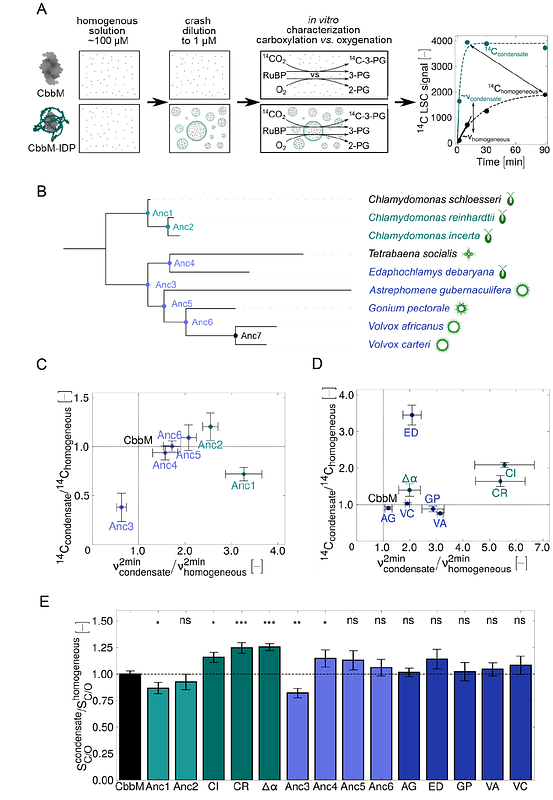Bottom-up reconstruction of minimal pyrenoids provides insights into the evolution and mechanisms of carbon concentration by EPYC1 proteins

Bottom-up reconstruction of minimal pyrenoids provides insights into the evolution and mechanisms of carbon concentration by EPYC1 proteins
Kuffner, A. M.; Pommerenke, B.; Kley, L.; Ng, J. Z. Y.; Prinz, S.; Tinzl-Zechner, M.; Claus, P.; Paczia, N.; Zarzycki, J.; Hochberg, G. K. A.; Erb, T. J.
AbstractMembraneless organelles play essential roles in cellular processes. In various photosynthetic organisms, they confer carbon concentrating mechanisms (CCMs). One example is the pyrenoid in Chlamydomonas reinhardtii, a liquid-phase separated organelle that localizes and improves carbon fixation via the intrinsically-disordered protein (IDP) EPYC1. Modern-day pyrenoids are complex structures, which makes it impossible to study the function of EPYC1, especially whether EPYC1 alone confers carbon concentration, and how EPYC1 could have initiated the evolution of pyrenoids. Here, we developed a bottom-up approach to study the function of EPYC1 and its sequence-function space across evolution. We demonstrate that modern-day EPYC1-sequences, but not other IDPs, induce liquid-phase separation of Rubisco into minimal pyrenoids with functional CCMs. Using ancestral sequence reconstruction, we trace the evolution of pyrenoids and demonstrate that selection acted on carboxylation rate, and in selected cases on specificity, providing unexpected perspectives on the design and function of natural and synthetic pyrenoids.


